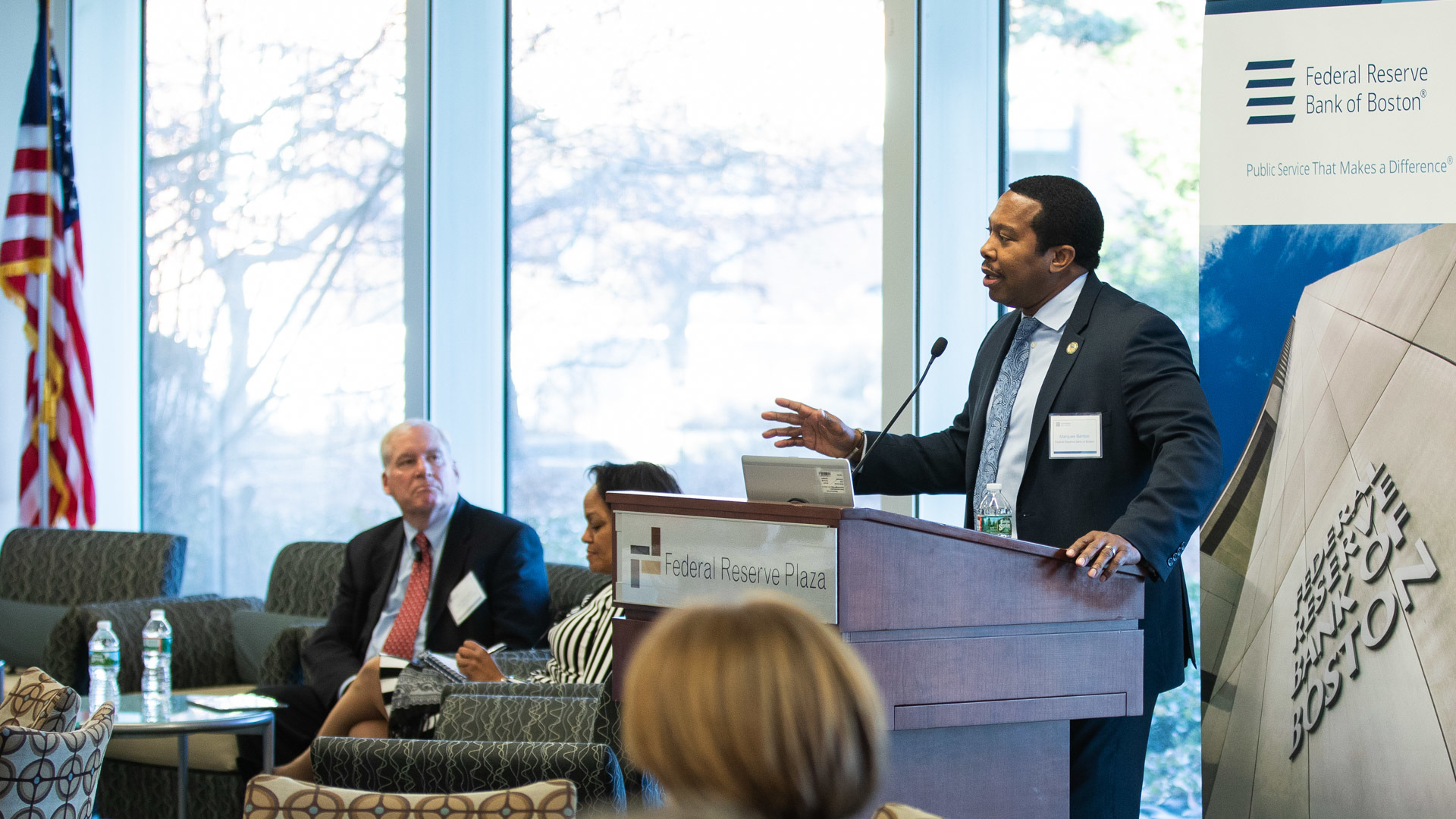How can companies boost the number of women in financial services? 
Industry leaders at Boston Fed conference look at challenges and discuss solutions 
Chief executive officers and leaders from companies around the region met at the Federal Reserve Bank of Boston to discuss ways to increase lagging female representation in the financial services industry.
More than 200 people gathered at the New England Financial Services CEO Roundtable’s Diversity and Inclusion Conference on Monday. The event focused on “Advancing Leading Women in Financial Services,” and featured panel discussions on the underrepresentation of women and how efforts to increase gender diversity boost both women and business.
“Although women make up more than half of the workforce, they are underrepresented in senior leadership positions in financial institutions,” said Marques Benton, the event organizer and the Boston Fed’s vice president of diversity and inclusion.
Benton added, “This conference brought together women and men from across the industry to inspire collective action, understanding, and solutions to address this industry problem.”
The panel discussions referred to or relied on a number of notable statistics about women in the workplace, including:
- Women held 10 percent of top executive positions in U.S. S&P 500 companies from 2016–17, according to Pew Research
- 19 percent of C-Suite positions in financial services are held by women, compared to an average of 22 percent in the U.S. overall, according to McKinsey & Co.
Monday’s first panel was moderated by Kathleen McQuiggan of The CFP Board Center for Financial Planning, and included Howard Bryant of ESPN.com, Jocelyn Wright of The Ascension Group, Shannon O’Mara of Loomis Sayles, Sandhya Douglas of Wellington Management, and Kat Tzouganatos of Deloitte & Touche.
Their conversation covered how men can become allies for women in the male-majority financial services field and how women in leadership can help other women in their careers. They also discussed different ways companies are addressing the gender gap in leadership—including mentoring and sponsoring, as well as employee resource groups that empower women and improve networking.
In the second panel, Laura Liswood of the Council of Women World Leaders led a discussion group that included Barbara McKenna of Longfellow Investment Management Company, Ron O’Hanley of State Street Bank, Bob Rivers of Eastern Bank, Kevin Charleston of Loomis Sayles, and Joe Keefe of Pax World Funds.
They focused on the business case for increasing ethnic and gender diversity, including a finding by McKinsey that businesses that showcase their efforts to hire more women and minorities are 33 percent more likely to have industry-leading profitability. The panel also discussed how using data can help companies advance women by revealing gaps in hiring and identifying areas for improvement.
Boston Fed President Eric Rosengren addressed the group and talked about building inclusive teams to ensure various perspectives are heard. He urged attendees not to narrowly define what diversity means: “I think it's important to think broadly about diversity—it encompasses gender, race, religion, and diversity of thought,” Rosengren said.
Rosengren also reviewed the Boston Fed’s commitment to diversity and inclusion and the specific ways leadership is following up on it, including efforts to make the Bank more attractive to diverse candidates, such as flexible schedules, and paid maternity and paternity leave. He also stressed the importance of using data to see how various initiatives are working and to help guide any course corrections.
“Making a commitment to diversity is more than just talking about it,” Rosengren said. "Focusing on data-driven metrics encourages accountability and increases effectiveness."
5 images


 About the Authors
About the Authors
Emma McMillen






